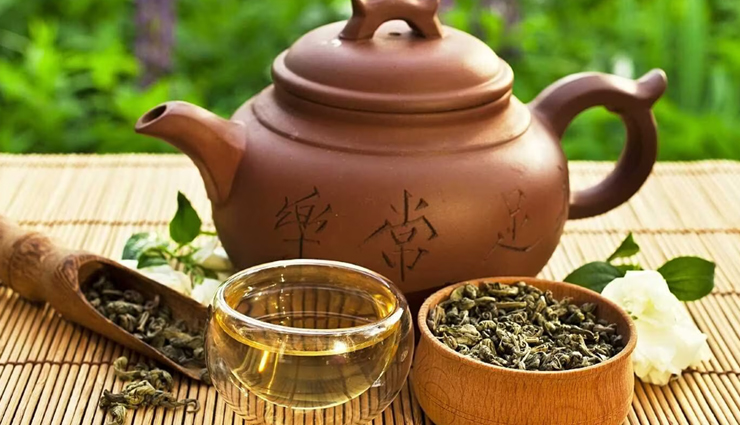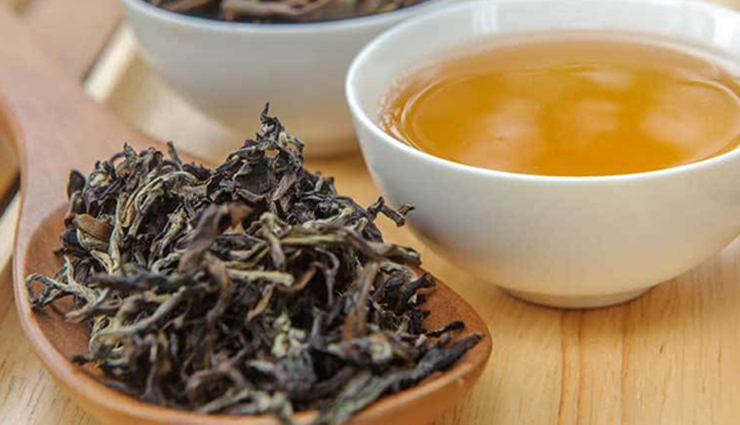- Home›
- Healthy Living›
- 9 Amazing Health Benefits Of Oolong Tea
9 Amazing Health Benefits Of Oolong Tea
By: Priyanka Maheshwari Wed, 01 Nov 2023 7:04:03

Oolong tea is a traditional and highly regarded variety of tea that falls somewhere between green tea and black tea in terms of oxidation and flavor. It originated in China and is also known as "Wulong" tea, which translates to "Black Dragon Tea" in Chinese. Oolong tea is known for its unique processing method, which involves withering, bruising, oxidation, and firing the tea leaves.
The key characteristics of Oolong tea include its varied oxidation levels, which can range from as low as 10% to as high as 70%. This oxidation level is responsible for the wide spectrum of flavors and aromas that Oolong tea can offer, from floral and fruity notes to earthy and roasted undertones. The processing of Oolong tea is often considered an art form, with skilled tea masters carefully controlling the oxidation and firing process to create the desired flavor profile.
Oolong tea is particularly popular in regions such as China, Taiwan, and parts of Southeast Asia, where it is deeply ingrained in the cultural and culinary traditions. It is often enjoyed in a Gongfu tea ceremony, where the tea leaves are brewed multiple times in small teapots or gaiwans to extract the full range of flavors.
Health enthusiasts also appreciate Oolong tea for its potential health benefits, such as antioxidants and potential weight management properties. It contains vitamins, minerals, and polyphenols that are believed to offer various health advantages.

# Weight Management
Oolong tea is sometimes touted for its potential to aid in weight management. The caffeine and catechins in oolong tea may help boost metabolism and increase fat oxidation. Additionally, oolong tea can contribute to better calorie control and potentially reduce the risk of obesity.

# Antioxidant Properties
Oolong tea contains antioxidants like catechins, theaflavins, and thearubigins, which can help neutralize harmful free radicals in the body. Antioxidants are known to support overall health and may help reduce the risk of chronic diseases.

# Heart Health
Regular consumption of oolong tea may be linked to improved heart health. Some studies suggest that it can help lower blood pressure and reduce the risk of heart disease. The antioxidants in oolong tea may also support healthy blood vessel function.

# Type 2 Diabetes Management
Oolong tea may help regulate blood sugar levels, making it potentially beneficial for individuals with type 2 diabetes. The polyphenols in oolong tea can improve insulin sensitivity and reduce blood glucose levels.

# Dental Health
Oolong tea contains fluoride and tannins, which can help prevent the growth of bacteria in the mouth and reduce the risk of dental cavities and gum disease.

# Mental Alertness
The caffeine content in oolong tea, though lower than that in coffee, can provide a mild stimulant effect that may improve mental alertness and cognitive function without the jitters associated with higher caffeine levels.

# Skin Health
Oolong tea's antioxidant properties may promote healthier skin by reducing the effects of oxidative stress. It might help in maintaining a more youthful appearance and supporting skin health.

# Digestive Benefits
Some people find that oolong tea can aid in digestion, as it may help soothe an upset stomach, reduce inflammation, and promote overall digestive comfort.

# Bone Health
Oolong tea contains minerals like calcium and magnesium, which are important for maintaining strong bones and preventing osteoporosis.

How to Make Oolong Tea
Ingredients:
Oolong tea leaves (1 teaspoon per cup)
Fresh, cold water
Teapot or tea infuser
Optional: teacup, teapot, or gaiwan
Method
- Heat fresh, cold water in a kettle. Oolong tea is best brewed with water just below boiling point, around 185°F to 205°F (85°C to 96°C). Water that's too hot can result in a bitter taste.
- Pour a small amount of hot water into your teapot or teacup to warm it. Swirl the water around and then discard it. This step ensures that the tea will steep at the right temperature.
- Place about 1 teaspoon of Oolong tea leaves into a teapot or a tea infuser in your teacup. Adjust the quantity based on your taste preference and the size of your teapot or cup.
- Pour the hot water over the tea leaves, ensuring they are fully submerged. Cover the teapot or cup with a lid to keep the heat inside. Let the tea steep for the recommended time (usually 3-5 minutes). Longer steeping times result in a stronger flavor.
- Oolong tea requires a specific steeping time to bring out its unique flavors. Lighter Oolong teas may steep for 3-4 minutes, while darker Oolongs might require 4-5 minutes. Experiment to find the perfect balance for your taste.
- After the tea has steeped, remove the leaves to prevent over-steeping, which can make the tea bitter. Oolong tea can often be steeped multiple times, each time revealing different flavor notes. Enjoy your Oolong tea plain or with a slice of lemon or a sprig of mint if desired.





